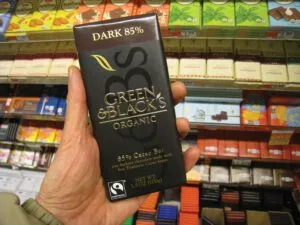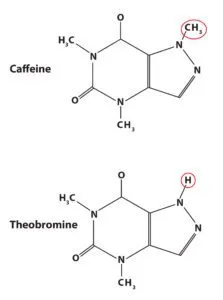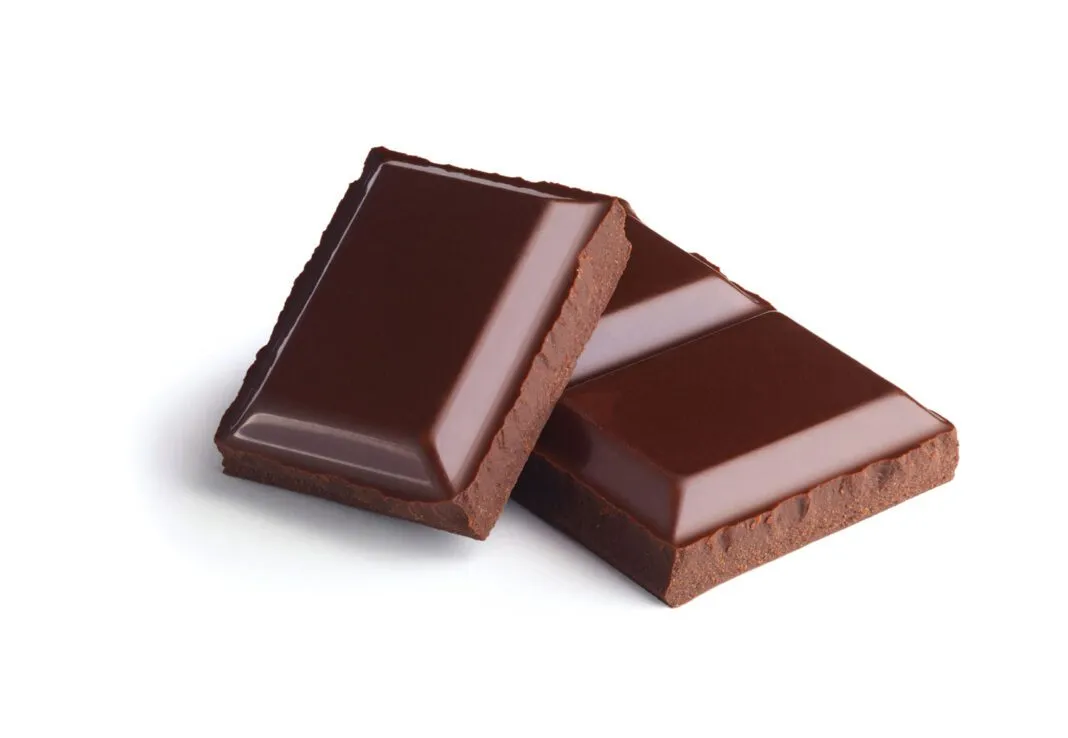Back in the days when I had two children under the age of two, I was writing full-time plus instructing part-time. This left me getting as much sleep as the crew of Apollo 13 when they rounded the dark side of the moon.
Someone willing to look an IMSAFE checklist in the eye would have given up the flying jobs. But I couldn’t. Instead, I did what any young, headstrong and foolish pilot would do: I abused caffeine.
However, I had a secret weapon. I also relied on chocolate. While my stimulant of choice might seem a frivolous topic for the accomplished pilot, many accomplished pilots struggle to remain alert to perform essential duties, so this is clearly a serious concern that is worth exploring.
Candy? Really?
We’re not talking about grabbing a vending-machine Hershey’s bar here. My chocolates of choice were “boutique” chocolate bars that had a high cocoa content. These bars usually have the percentage of cocoa (sometimes written “cacao” to justify gourmet pricing) proudly printed on the side. The ones in my flight bag were stamped with “85 percent” or, occasionally, “100 percent.”
Who cares whether your lift comes from coffee or chocolate? Well, for me anyway, it made a big difference. A cup of coffee before a flight woke me right up. But it only lasted about an hour before the fatigue noticeably crept back in.
Three squares of the chocolate bar acted more slowly. I wouldn’t really notice until 30 minutes or so after eating it. But it lasted for several hours. It was more useful than the coffee buzz; I felt good clarity of mind without any jitters. Of course, chocolate avoids the biological imperatives that accompany your daily venti—a real boon when working in small airplanes with no, um, relief.
The chocolate stimulant effect to me was like taking the total buzz of coffee and spreading it out over a longer time at a reduced intensity. In fact, I had to be careful when eating chocolate late in the evening. More than once I came home from night flights after eating chocolate too late and just lay there wide awake. Not wired, but completely unable to fall asleep.
It wasn’t that I never drank coffee—I wouldn’t get through a morning without it—but the chocolate was a different option that was just better for flying most of the time. Chocolate contains caffeine, but not much compared to a cup of coffee. However, it also contains large amounts of something called theobromine, which is quite similar to caffeine as discussed in the sidebar.
A Square Meal
I found three squares of most bars (about 25 grams) to be the most I’d need for hours of staying power. I usually ate a bit of bread with it, too, as I found 25 grams of chocolate without food could have the same sour-stomach effect as a cuppa joe.
However, exact doses varied with brand. The cocoa content printed is a combination of cocoa solids and cocoa butter. Here’s how it works: the cocoa nibs, which are what get turned into chocolate, are about 54 percent cocoa butter, a fat, and 46 percent cocoa solids. The solids contain the stimulant.
Creating cocoa means separating these two parts, processing them, then mixing them back together with sugar to get the product we call chocolate. Dark chocolate usually has 10-15 percent extra cocoa butter than was originally in the cocoa beans alone. So the total percentages of a typical dark chocolate bar might be 39-percent cocoa beans (cocoa butter and solids), 13 percent pure cocoa butter and 48 percent sugar (with a few other things in trace amounts). That would be a “52-percent” bar if it were labeled because both the total cocoa beans and cocoa butter count.
Under this system, a Hershey’s milk chocolate bar would be about a 46-percent bar. But the Hershey’s bar is only about 16 percent cocoa beans, less than 8 percent cocoa solids that contain the stimulant. The buzz you get from Hershey’s is mostly the sugar.
But high-cocoa bars have sizable amounts of real stimulant in the cocoa solids. Tasty trial and error taught me which ones used less cocoa butter and more solids. My favorite was the Michel Cluizel 85. But no matter what, any 85-percent bar has at least 70 percent beans, or about 35 percent solids with the go-juice locked within.
My flight bag at the time had an outside pocket that always sported about half a bar. I used it when needed. Some of my students got the chocolate bug, usually as a result of a night cross-country. And I was quite popular with several of the female flight instructors who seemed particularly keen on getting some chocolate no matter what on certain days. Sometimes I found an apologetic IOU in my bag next to a seriously depleted bar.
Get Some Sleep
As much as the chocolate helped, it wasn’t a replacement for real sleep and flying tired is a dangerous game. When you find yourself turning up your headset volume so ATC radio calls shock you back into awareness, you’re hours past when you should have called it quits. Presuming you live long enough to land, you need to assess how you let things go that far.
But the fact remains we all can use a pick-me-up at times to take a slightly muddled brain and give it the clarity it needs for a safe outcome. If you’re looking for an alternative to the sudden buzz and biological urgencies that come with a cup of coffee, toss a high-cocoa bar in your flight bag and try a few squares.
Besides, if your right-seater has a sweet tooth, it might be just the thing for cockpit harmony as well an extra-alert flight.
Jeff Van West still enjoys some high-cocoa chocolate from time to time, but now prefers it in hot liquid form, what with the long Maine winters.
Ben Franklin is often attributed the quote, “Beer is proof that God loves us and wants us to be happy.” Perhaps caffeine is proof that God loves us and doesn’t want us to strangle our coworkers by 10 am.
Surprisingly, about 60 different species of plants worldwide produce caffeine and related chemical analogs. It’s that “related chemical analogs” part that makes chocolate so interesting.
Cocoa beans c ontain caffeine at concentrations far lower than tea or coffee. The catch is that they also contain theobromine, which differs from caffeine in a single methyl group and has similar effects, but it’s not identical. Theobromine is why chocolate is toxic to dogs, but coffee isn’t. One little chemical change can make a big difference, and is probably at the heart of why a stimulant burst from high-cocoa chocolate has the different signature I found so useful for flying.
ontain caffeine at concentrations far lower than tea or coffee. The catch is that they also contain theobromine, which differs from caffeine in a single methyl group and has similar effects, but it’s not identical. Theobromine is why chocolate is toxic to dogs, but coffee isn’t. One little chemical change can make a big difference, and is probably at the heart of why a stimulant burst from high-cocoa chocolate has the different signature I found so useful for flying.
The average cocoa bean is about 0.2 percent caffeine by weight (but can get as high as 0.7 percent). Tealeaves are about 3 percent caffeine. Dry coffee beans are 1-3 percent caffeine. Yet we know a cup of brewed coffee has at least twice the caffeine of black tea, even though the tealeaves are higher in caffeine than the coffee beans, so preparation is critical.
Such is true with chocolate as well. The caffeine and theobromine content vary between bars that advertise similar cocoa content. For example, 25 grams of a Scharffen Berger Extra Dark 82-percent bar contains 24mg caffeine and only 155mg of theobromine. But 25 grams of a Dagoba Dark Chocolate 73-percent bar contains 23mg of caffeine and a whopping 204mg of theobromine. Just for comparison, 25 grams of a Hershey’s bar has about 5mg of caffeine and about 37mg of theobromine.
So it’s possible 25 grams of high-cocoa chocolate could have 250-300mg of caffeine-like substances combined. If that stimulant was all caffeine, it would equal two-and-a-half to three shots of espresso.
Part of the confusion as to whether or not chocolate has caffeine comes from these two compounds being similar enough that simple tests don’t often distinguish between them. Given there’s five to nine times as much theobromine as caffeine in chocolate, that’s going to result in some wildly variable numbers.
The point to remember from this is that chocolate contains both caffeine and something like it. Both are stimulants that could be a problem for the weak of heart. The cocoa percentage on the bar is just a rough measure of strength so you’ll have to experiment with which one is right for you.
There could be worse testing programs than having to try a bunch of different chocolate bars. —JVW
Jeff Van West still enjoys some high-cocoa chocolate from time to time, but now prefers it in hot liquid form, what with the long Maine winters.

